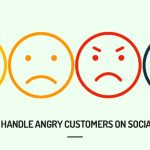
Internal marketing—the creation of marketing content specifically for employees—can increase employee engagement and create a company culture that attracts top talent. Whether your team is in the office, remote, or hybrid, creating an engaging and authentic employee experience is critical. When your employees believe in your brand and its mission, they’ll go the extra mile to help your business succeed.
Leaders who invest in internal marketing empower their employees to become a part of the company’s story—ultimately improving the brand experience for their customers. Effective internal marketing can also help recruiters show how your company culture connects employees to their highest professional aspirations.
What is internal marketing?
The term marketing usually refers to external marketing: content created for consumers that provides value and is intended to create a behavior change or an emotional connection to a brand. Likewise, internal marketing uses the same principles to engage employees and internal stakeholders. Marketing your brand to your employees ensures the entire team understands the mission and is rowing the boat in the same direction.
If external marketing promises customers a particular experience or brand interaction, internal marketing gives employees the tools to deliver on that promise. Effective internal marketing campaigns can help employees identify with your brand and motivate them to live the mission in their day-to-day activities. When employees have the brand’s values front-of-mind when engaging with customers or stakeholders, everyone wins.
Additionally, if your business wants to attract top talent, effective internal marketing content can serve as a basis for enticing company culture. Attracting top talent means offering more than a paycheck. Employees want to feel connected to a business’ mission and work towards a common good. Prospective talent and new hires will feel inspired by a sense of purpose when you weave the branding into the fabric of the business. Employee turnover is expensive. Stop the cycle and invest in internal marketing.
How to implement internal marketing
Much like external marketing, internal content should help employees better understand the brand’s mission and provide a roadmap for employee success. Your employees should be among your brand’s loudest cheerleaders—give them an idea to rally around through compelling internal marketing.
When developing internal content, look first at your external marketing campaigns. What messages are you sharing in the media? Can those be repackaged for internal audiences? Your external marketing will work harder if your entire team uses the same language when talking about your company.
Second, make sure employees are the first to hear big company news and new product or service offerings. These announcements should be more than a dry newsletter that hits the “trash” folder immediately. Instead, invest in visually exciting and well-written content to sell your employees on the idea. Think: Could the message have more impact coming directly from a company leader? Is this content worth sharing socially?
Once you’ve established your new internal marketing campaign, create a feedback loop to hone in on what kinds of messages and platforms work for your employees. Give your employees a way to have their voices heard—anonymously, if possible. The better you can make the internal marketing reflect employee feedback, the bigger the employee buy-in.
3 Examples of Effective Internal Marketing
If you’re still a bit unsure of how this kind of marketing plays out in real life, take a look at these examples for inspiration.
You may remember these commercials from a few years ago. Johnsonville created a series of TV commercials featuring the faces and ideas of their employees. This ad campaign pulled double-duty by engaging employees in a meaningful way and selling the idea that Johnsonville is a family-owned business, unlike its mega-corporation competitors.
When bicycle industry retailer, Quality Bike Parts (QPB), says they want “every butt on a bike,” they put their money (and merch) where their mouth is. Employees can earn merchandise credits of $3.00 every day they bike-commute to work. In addition, to entice their team, every QPB distribution center offers indoor bike storage and locker rooms with showers. Is there a better way to attract talented cycling enthusiasts to work for your cycling and outdoor company?
This example strays from the convention slightly, as it didn’t intend to advance a single brand’s image. However, it makes a list through sheer marketing genius that countless companies have adopted. In 2009, Discovery Channel’s then TV series, Dirty Jobs, aired an episode titled “Safety Third.” Beginning with that episode—and continuing a conversation ever since—host Mike Rowe aimed to turn the white noise of “Safety First” into an ongoing conversation.
What to Do Now
Internal marketing is just as important and requires just as much thought and deliberation as external marketing. In fact, you could argue that internal marketing is slightly more important than external marketing because it enables your business to grow by attracting top talent and empowering and engaging your existing team.
If you’re ready to turn your marketing inward and begin an internal marketing campaign but aren’t sure where to begin, give us a call at 717-381-5385 or contact us today and let’s start something awesome.




